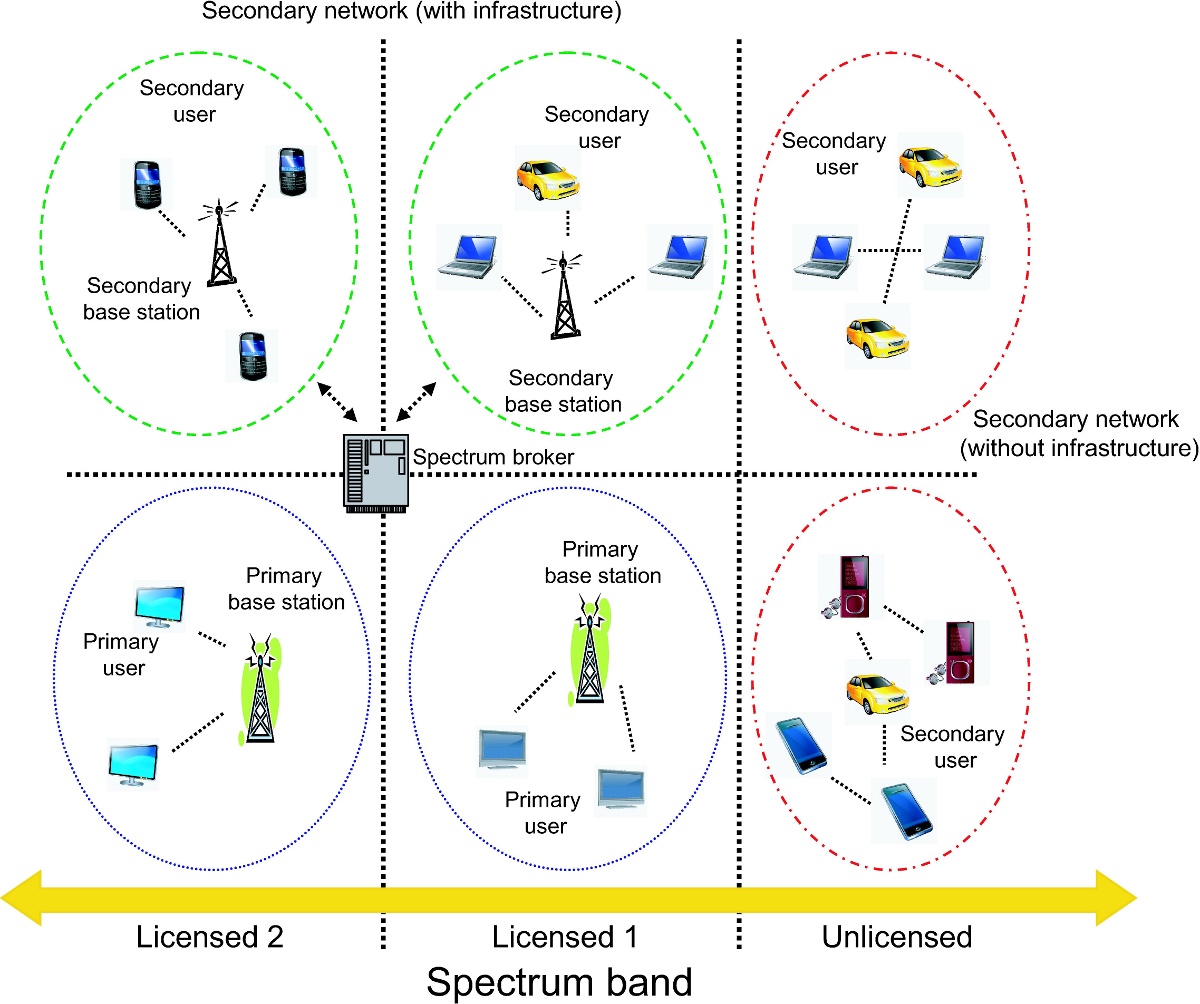The idea of cognitive radio was first presented officially by Joseph Mitola III in a seminar at KTH, The Royal Institute of Technology, in 1998, published later in an article by Mitola and Gerald Q. Maguire, Jr in 1999.[2] It was a novel approach in wireless communications that Mitola later described as:
The point in which wireless personal digital assistants (PDAs) and the related networks are sufficiently computationally intelligent about radio resources and related computer-to-computer communications to detect user communications needs as a function of use context, and to provide radio resources and wireless services most appropriate to those needs.[3]
It was thought of as an ideal goal towards which a software-defined radio platform should evolve: a fully reconfigurable wireless black-box that automatically changes its communication variables in response to network and user demands.
Regulatory bodies in various countries (including the Federal Communications Commission in the United States, and Ofcom in the United Kingdom) found that most of the radio frequency spectrum was inefficiently utilized.[4] For example, cellular network bands are overloaded in most parts of the world, but many other frequency bands, such as military, amateur radio and paging frequencies are not. Independent studies performed in some countries confirmed that observation,[5][6][7] and concluded that spectrum utilization depends strongly on time and place. Moreover, fixed spectrum allocation prevents rarely used frequencies (those assigned to specific services) from being used by unlicensed users, even when their transmissions would not interfere at all with the assigned service. This was the reason for allowing unlicensed users to utilize licensed bands whenever it would not cause any interference (by avoiding them whenever legitimate user presence is sensed). This paradigm for wireless communication is known as cognitive radio.
The first phone call over a cognitive radio network was made on Monday 11 January 2010 in Centre for Wireless Communications at University of Oulu using CWC’s cognitive radio network CRAMNET (Cognitive Radio Assisted Mobile Ad Hoc Network), that has been developed solely by CWC researchers.[8],[9]


Xxxxxxxxxxxxxxxxxxxxxxxxxxxxxxxxxxxxx
Yyyyyyyyyyyyyyyyyyyyyyyyy